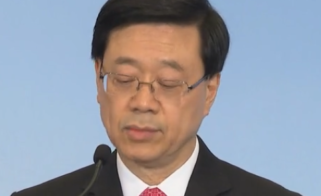The federal health-insurance website may have tripped going out of the gate, but most of the state-run exchanges aren’t doing much better. Only some thousands of people have managed to sign up on any one website, and several have shut down more than once for a tune-up and a reboot.
Ironically, states that started out with the smallest ambitions seem to have led the pack.
Kentucky, with its slimmed-down exchange and small population to serve, and Washington, with its emphasis on window-shopping before getting out the wallet, may have enrolled more people — faster — than states like Maryland, which tried to emulate the federal do-it-all-at-once approach, experts say.
Brett Graham, a former insurance executive who directs Leavitt Partners’ health-insurance exchange practice, likens it to building a house.
“If you are building a house and you want to occupy it by a certain date, you have to have the plumbing and electricity done,” says Graham, whose company consults on private health exchanges.
“But if you choose not to finish the basement or you choose not the finish the deck or not to have the yard done … you will still be able to have shelter.”
Leaving off those extras appears to have worked for Kentucky, where officials say they’ve enrolled more than 15,000 people on the exchange, and Washington, which reports 30,000. Maryland, meantime, reports 16,000 people have filled out applications online but only 1,100 or so actually have enrolled. Maryland has about 800,000 people without health insurance, compared to Kentucky’s 650,000.
Logins create logjams in many states
“Many of the state websites, though not all, elected to simplify the process and allow you to shop without creating a login and submitting all your personal information,” says Caroline Pearson, a health reform expert at consulting firm Avalere Health.
California, Colorado, Connecticut, Minnesota, Nevada, Oregon, Rhode Island and Washington all let users skip the login. Maryland and Washington, D.C., appear to have been bogged down at least in part by making users create a login identity. Only 164 people in Washington D.C. had managed to actually buy insurance online as of the last report.
But even those states have had trouble. Covered California, the state’s health-insurance program, was taken down for work over the weekend. State officials said 16,000 Californians had completed applications online in the first five days but they’ve stopped reporting numbers now.
Kentucky Lt. Gov. Jerry Abramson explains the new state-run health care exchange on the first day of sign-ups for the federal Affordable Care Act in L…
Dylan Lovan / AP
Kentucky Lt. Gov. Jerry Abramson explains the new state-run health care exchange on the first day of sign-ups for the federal Affordable Care Act on Oct. 1. Kentucky has been a success story in state sign-ups.
Most states have stopped, in fact. Connecticut offered daily updates until Oct. 11, when it said 1,443 people had signed up for private insurance and 1,544 had been directed to Medicaid. Minnesota’s state-run health-insurance exchange reported last week that about 5,600 households had completed applications for coverage in its first two weeks.
It’s not necessarily easy to make a state-by-state comparison of who has actually managed to enroll because each state reports it differently. The federal government is not reporting at all until November, officials said.
Actual enrollment figures will have to wait
Insurance industry sources say some states are not planning to send applications to the companies until Nov. 1, meaning it’s not clear how many of those applications are complete and will actually go through.
According to the Advisory Board Company, 134,801 customers had applied at 15 state-run exchanges as of Oct. 16 and 48,457 people had actually managed to enroll in a plan. The federal government is counting on getting 7 million signed up by the end of next year.
There’s time: People don’t have to sign up until Dec. 15 if they want insurance starting on the very first day possible, Jan. 1. And they have until March 31 to enroll for 2014.
The federal government has been stuck completely running or at least helping to run the health-insurance marketplaces in 36 states. Fourteen states and Washington, D.C., are running their own.
“There is a high variability in the overall sophistication and searchability of the state websites,” Pearson says. Some let users see right away if a particular prescription drug is covered by a certain plan; others have left that off. “Whether you can see if your physician is part of the network was supposed to be part of the state exchanges, but they can add that later,” Pearson says.
Nevada, she says, has a “sophisticated” option for searching for drugs. But any site would find it easy to add a link to a formulary — a list of covered prescriptions.
Some states are taking a relaxed approach. Hawaii’s online site didn’t even go up until Oct. 15. Before that, people could sign up by phone or in person, as President Obama has urged users of the federal websites to do if they are in a hurry.
